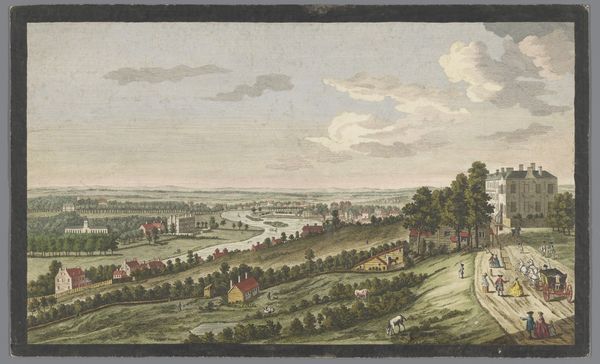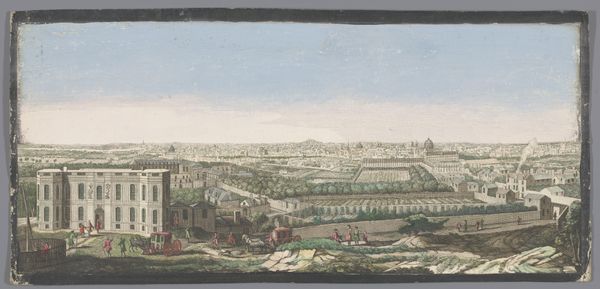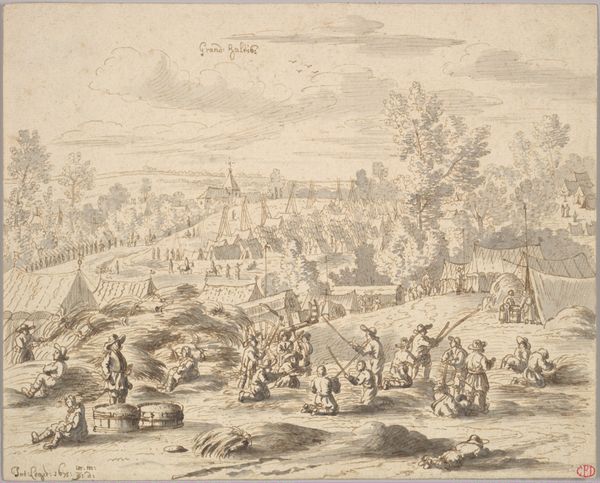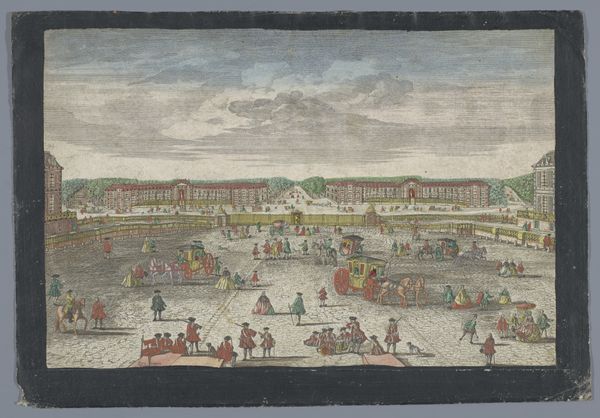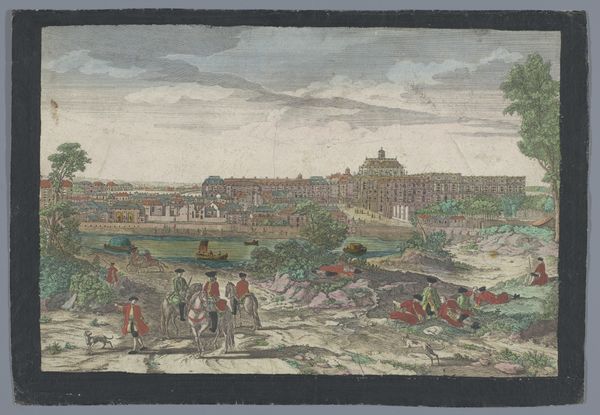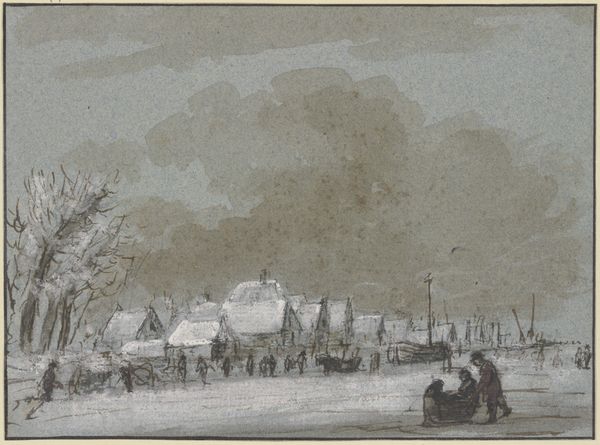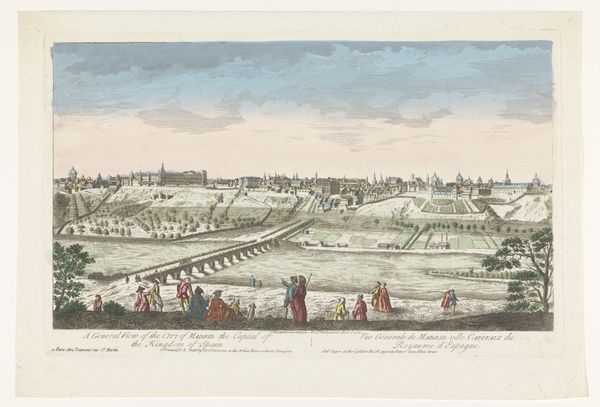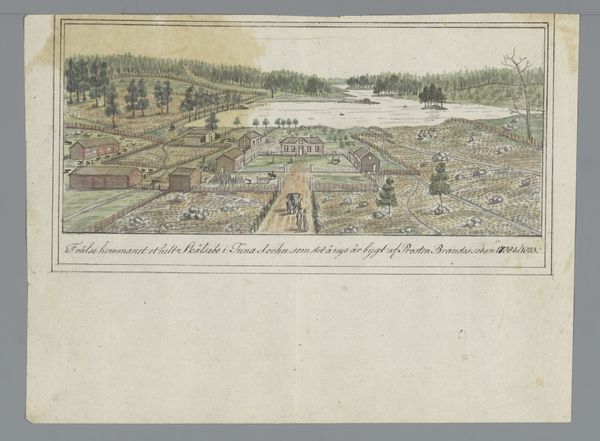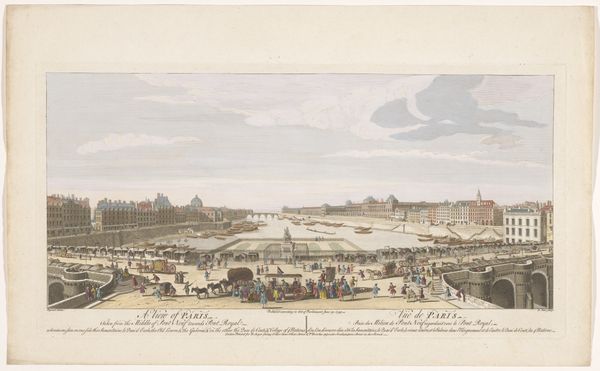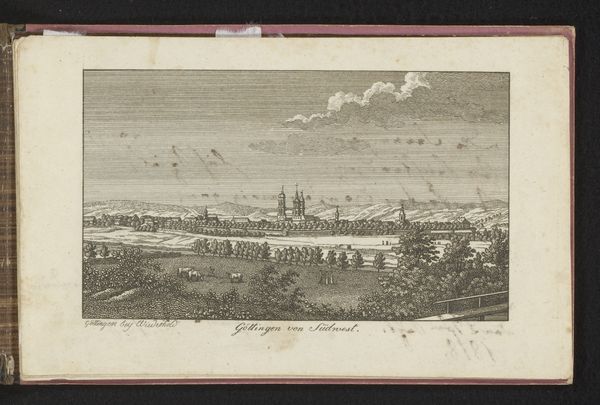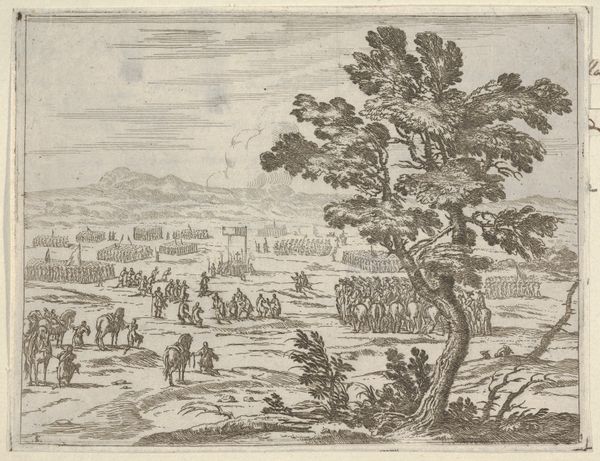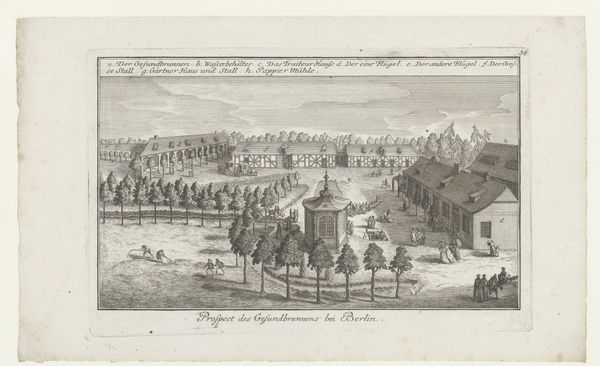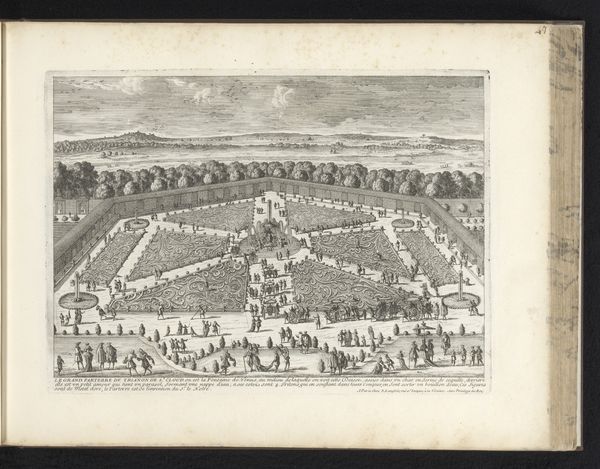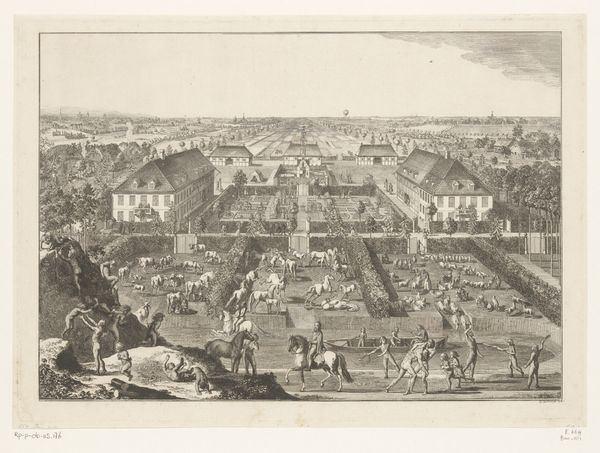
Gezicht op de Pont Neuf over de rivier de Seine te Parijs, gezien richting de Pont Royal 18th century
0:00
0:00
painting, watercolor
#
painting
#
watercolor
#
coloured pencil
#
cityscape
#
genre-painting
#
rococo
Dimensions: height 237 mm, width 475 mm
Copyright: Rijks Museum: Open Domain
This print of the Pont Neuf in Paris was made by an anonymous artist using etching and possibly some engraving, then colored. This combination of techniques allowed the artist to create fine, detailed lines and textures, which were then enhanced with delicate color washes. The etcher would have covered a copper plate with a waxy ground, then drawn the image into the wax with a sharp needle, exposing the metal. Acid was then applied to bite into the exposed lines, creating grooves. The plate was then inked, and the surface wiped clean, leaving ink only in the etched lines. Finally, paper was pressed against the plate to transfer the image. It's interesting to consider the social context of printmaking at the time. Prints like these were relatively affordable, making images of famous landmarks accessible to a wider audience. This was a form of mass production, in a way, reflecting the increasing commercialization of art and culture. The amount of work involved—from preparing the plate to printing each impression—highlights the skilled labor behind these seemingly simple images, a reminder of the craft involved in creating art for the masses.
Comments
No comments
Be the first to comment and join the conversation on the ultimate creative platform.
